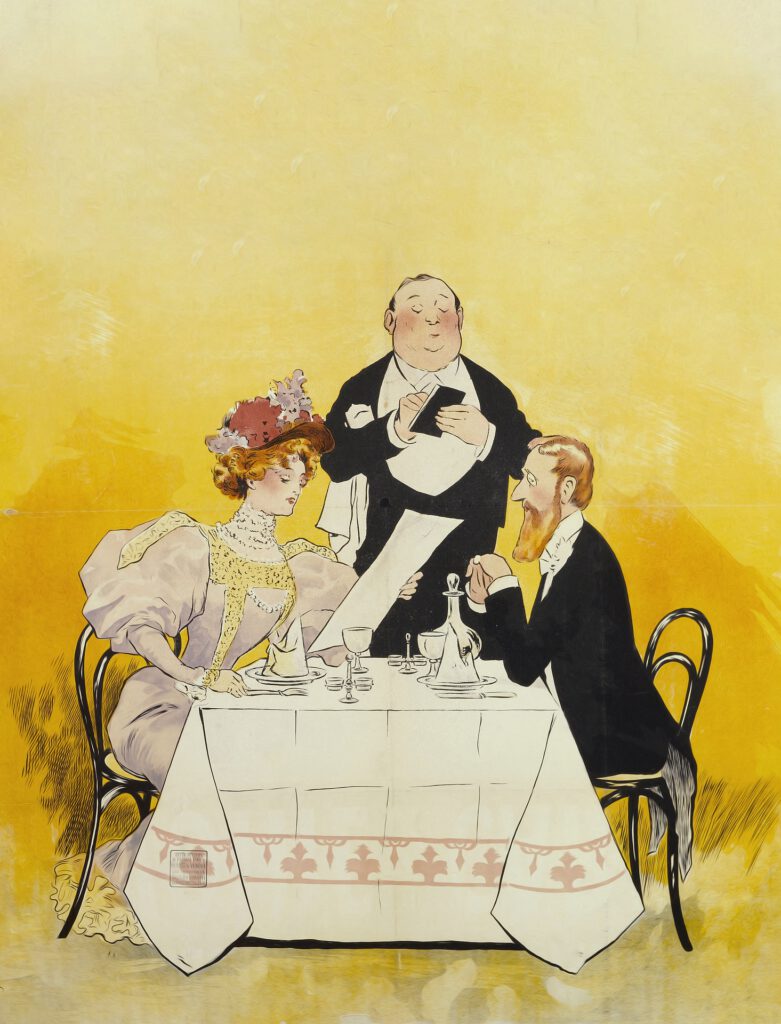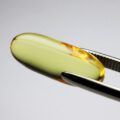Taste definition
Taste
“The fate of the nations depends on the way they eat.”
(“The destinée des nations dépend de la manière dont elles se nourrissent.”)
– Jean Anthelme Brillat-Savarin: Physiology of Taste –
Taste – definition
= a complex sensory impression when eating, which is due to the interaction among the senses ofSmellTasteTouchTemperature, and evenPain.
Food in its nature and its chemical components activate the nose, the receptors and the taste apparatus of the oral cavity physically and chemically and starts a complex neuronal activity in taste nerves and taste-related areas of the brain. This activity leads to taste sensations and perceptions in the narrower sense. In addition, there is the emotional and cognitive evaluation of these stimuli in relation to our motivation, the so-called “reward value” and our expectations, which in the best case stimulate the brain’s self-reward system intensively. That is the highly emotional pleasure component of our taste perception.
Taste qualities
There is general agreement that activation of the taste system in humans leads to the perception of five unique taste qualities: salty, sweet, umami (savoury), sour and bitter.
In fact, only a small part of the sensations perceived as taste (in a broad sense) is based on stimuli from the taste receptors in the mouth. The largest part is caused by volatile aroma substances that rise up in the nose when chewing and stimulate the olfactory cells in the roof of the nasal cavity. The signals are sent from the sensory cells to the brain, where they are distributed to different stations and compared with other input or stored information. The separate signals are first summarized in the thalamus, the gateway to consciousness, and then put together in the cerebral cortex to form even more complex patterns that build the (possibly conscious) sensory impression. Other nerve signals reach the hypothalamus and amygdala, e.g. olfactory signals. Here it is decided whether a taste quality is classified as pleasant or unpleasant.
Spiciness
Spiciness is actually not a taste quality in the strict sense, but a pain signal triggered by certain substances, the so-called spicy substances. Chili contains the tasteless substance capsaicin, which biochemically creates a hot and burning sensation in the mouth when it is eaten, which is then sent to the brain as a pain signal. The same signals are generated when there are heat stimuli above 43 ° C, that is, when the food is hot, and we “burn” our tongue.
The perception of these taste qualities plays a crucial role for all living beings. It allows the organism to assess the nutritional value and possible harmfulness of food. Toxic natural substances usually taste bitter. A taste that is perceived as unpleasant can trigger a gag reflex or, in extreme cases, even lead to vomiting. The umami taste quality indicates animal or vegetable protein sources. Natural, high-energy foods have a particularly pleasant taste. Even newborns prefer sweet and umami. The aversion to bitterness and sourness likewise seems innate.
Taste and health
The taste changes the metabolism and contributes to diseases such as obesity, diabetes and high blood pressure.
Various diseases and medications, on the other hand, can severely impair the sense of taste and thus the quality of life, for instance chemotherapy.
Researchers also found that the preference for bitter taste is correlated with malicious personality traits associated with sadism and psychopathy (the “dark triad” personality traits of narcissism, manipulativeness, and psychopathy).
Taste disorders themselves can be of different types. A qualitative disorder (dysgeusia) changes the perception of a taste. For example, a strong aftertaste, often bitter or metallic, may occur. (A special form is the Burning Mouth Syndrome.) Quantitative disorders are hyper- or hyposensitivity to taste stimuli – to complete loss of taste perception. The causes are diverse and range from diseases of the mouth and throat to brain diseases. Disorders of taste are more common a result of impaired smell perception, which can often lead to loss of appetite in those affected. Older people are particularly affected by loss of smell and taste.
(A common misconception is that tongue piercings affect the taste sensation. Regardless of other health risks, piercings are – usually – placed in the middle of the tongue, where there are very few or no taste sensory cells at all.)
Although much is still unknown, our understanding of the taste system has evolved enormously. Advances in molecular genetics improved our understanding of taste receptor molecules. This information has in turn stimulated the re-evaluation of long-standing ideas on the basics of coding and perceiving taste stimuli in the brain. At the same time, advances in functional brain imaging have enabled a non-invasive examination of the nerve pathways and processes involved in taste perception in humans. These studies have also shown neural correlates of taste and enjoyment associated with food.
Taste – pleasure and culture
However, there is a long way to go from the taste qualities and their neuronal counterparts to a menu made from swiss chard soup, saddle of venison in a herb bed with spelt patties and a Pinot Noir, followed by a parfait of blood oranges and Roquefort cheese.
In general, pleasant taste, regardless of innate likes and dislikes, is not a natural quality of food or dishes, but anchored in the culture we are guided by. (For example, Cubans and Chinese often reject the taste and smell of Roquefort cheese and call it “spoiled milk”.)
The development of taste arises from a process of getting used to the taste of amniotic fluid, breast milk and finally various foods: the more often we experience a taste quality in early childhood, the greater our acceptance of the corresponding food. This process of habituation is scientifically called the “mere exposure effect”. If we eat the same food several times within a short period of time, there is a temporary aversion to this dish (“psychological saturation”) – if it has a distinct taste of its own. The mechanism probably prevents completely one-sided nutrition. Interestingly, this saturation effect does not occur with staple foods such as rice, potatoes or pasta. Food taste also conveys a feeling of security and belonging to certain groups, both during childhood and in adulthood.
When combining food, taste perception and pleasure, gastrosophy comes into play as a philosophical nutritional science and practical wisdom of eating well. Given the frequency of eating and its role in everyday life and culture, it is surprising how few publications there are about the pleasure of taste, compared to the overwhelming number of scientific research results on taste perception. (Even the instinct-theoretical considerations of psychoanalysis, from Freud to Lacan to the present, are no exception. Jean-Anthelme Brillat-Savarin can be considered the founding father of modern gourmet science. In 1825, with the well-respected “Physiology of Pleasure” he made the human capacity for culinary sophistication for the first time in the history of occidental thinking – a worthy object of unbiased scientific thought. He developed an essential idea: “The tastes are innumerable, because each soluble body has a special taste that is not very similar to any other.” In the 16th century, nine basic taste qualities were still recognized: “sweet”, “sour”, “hot”, “hearty”, “harsh“, “greasy”, “bitter”, “bland” and “salty”. A century later Linnaeus added “pungent“, “sticky”, “watery” and “fetid“, but left out “hearty” and “harsh“. Albrecht von Haller added “bracing”, “aromatic”, “urine-like”, and “musty” to the original list, but found “greasy” dispensable. Whether five or nine taste perceptions, a holistic understanding of taste and food enjoyment exceeds the reduction to a limited number of flavors.
It was also Brillat-Savarin who, in this context, emphasized the fact – which is easy to understand in everyday life – “that smell and taste only make one sense, for which the mouth is the laboratory and the nose is the chimney, or to put it more sharply , one of which is intended for the taste of the palpable body, the other for that of the gases”. (Let us remember the way foods taste with a runny nose or simply with the nose closed.) Therefore, the sense of smell and taste are intertwined. In addition, when tasting, there is also touching, feeling and moving the food with the tongue and through the chewing teeth in the mouth. They disclose temperatures, textures, firmness, and other properties. On the one hand, there is a sequence of tasting, feeling, chewing, and tasting. The perception process is summarized, however, as soon as the food has been passed on for digestion and extraction of the nutrients.
In addition to taste, smell and (mouth) feeling, seeing and hearing also contribute to the full eating experience. The dish is pleasing to the eyes, and just as the eyes “revel” in the dish, so does the hearing in the “feast for the ears”: Every eating act is accompanied by noise of some sort that are part of the taste assessment and overall experience of eating pleasure.
In the sequence of sensations, Brillat-Savarin defines three phases: 1. the direct, 2. the complete, and 3. the reflective taste sensation: Direct sensation refers to the first impression that food makes when it enters the mouth. Chewing begins, releasing more flavors, and as the food slides down the throat olfaction contributes further to “complete” taste. After swallowing, the taster exhales and the final stage of taste commences, that which he calls “reflective”: “the opinion which one’s spirit forms from the impressions which have been transmitted to it by the mouth.”
This sequence and synthesis of complex sensory impressions gives the taste experience richness and depth. It is therefore not surprising that more taste sensations develop when chewing slowly for a long time, when the fullness of taste is experienced in particular through the free interplay of imagination and expectation. It is like experiencing visual art or music: we have to question our food or wine with our nose and mouth, let the emotional impressions take effect, and only then classify and decipher them. The full mouth with its moves, interplay of tongue, lips, palate, cheeks and teeth creates a sensuality of the mouth from sensations and physical activity. When taste unfolds, it is deliberately tasted and perceived in its fullness; when we taste, we don’t just perceive with the mouth; when we taste, we sense (recognize and reflect) in our mouth and are completely “mouth” for a moment. One can learn from neurophysiology that in humans most tactile receptors are situated on the tongue and lips. There, receptors are so closely arranged that two touches, which are only between one and four millimeters apart, are perceived separately as different. The French philosopher Michel Serres therefore describes lusty and lustful taste as a kiss and self-indulgence: “Taste is a kiss that our mouth gives itself through the intermediary of tasty foods. Suddenly it recognizes itself, becomes conscious of itself, exists for itself.” In the mouth, our enjoying body comes to life. We experience our bodily being while eating. The taste perception is always a self-confirmation of our sensuality. Who eats shows teeth, his open mouth and his own eating behavior and his peculiarity of enjoyment. Eating and chewing tell of the soul and pleasure life of the eater. (The instinctive theory of “oral eroticism” is also accessible here in adulthood.) If you feel uneasy about this, remember Marcel Proust’s famous Madeleine, a kind of shell-shaped tart made of sand dough, as proof of self-enjoyment in taste perception: “No sooner had the warm liquid mixed with the crumbs touched my palate than a shudder ran through me and I stopped, intent upon the extraordinary thing that was happening to me. An exquisite pleasure had invaded my senses, something isolated detached, with no suggestion of its origin [… ] this new sensation having had on me the effect which love has of filling me with a precious essence: or rather this essence was not in me it was me…”
Therefore, taste and enjoyment are the result of complex perceptual activity, sensory impressions and also the result of a long coordination process in which the preparation habits translate the expectations of taste and pleasure into practice. As a result of this coordination, the sense of taste is not about aroma molecules or intracellular messenger substances, but food and our physical self (physical well-being). The apparently banal cooking recipe then becomes a cultural set of rules for taste and self-enjoyment.
Sources and further information:
Breslin, P. A. S., and A. C. Spector. 2008. Mammalian taste perception. Current Biology 18.4. R148-R155. DOI: 10.1016/j.cub.2007.12.017
Brillat-Savarinn, Jean Anthelme: La Physiologie du Goût (1826). Deutsch von Hans Eckart Rübesamen: Physiologie des Geschmacks. Eingeleitet von Walther Kiaulehn, Heyne, München 1976 (= Heyne ex libris, 9)
Buck, L., and C. Bargmann. 2012. The chemical senses. In Principles of neural science.
Edited by E. R. Kandel, J. H. Schwartz, T. M. Jessell, et al., 712–742. 5th ed. New York: McGraw-Hill.
Doty, R. L., ed. 2015. Handbook of olfaction and gustation. 3d ed. Hoboken, NJ: John Wiley.
Doty, R. L. 2012. Gustation. Wiley Interdisciplinary Reviews: Cognitive Science 3.1: 29–46. DOI: 10.1002/wcs.156
Hummel, T., and A. Welge-Lüssen, eds. 2006. Taste and smell: An update. Vol. 63. Basel: Karger Medical and Scientific Publishers.
Lemke, Harald: Phänomenologie des Geschmackssinns, In: Dietrich von Engelhardt, Rainer Wild und Gerhard Neumann (Hrsg.), Geschmackskulturen, Campus Verlag New York Frankfurt/M. 2005, 183-204
Shepherd, G. M. 2011. Neurogastronomy: How the brain creates flavor and why it matters. New York: Columbia University Press. DOI: 10.7312/shep15910
Smith, D. V., and R. F. Margolskee. 2001. Making sense of taste. Scientific American 284.3: 32–39. DOI: 10.1038/scientificamerican0906–84sp
Spector, A. C. 2000. Linking gustatory neurobiology to behavior in vertebrates. Neuroscience and Biobehavioral Reviews 24.4: 391–416. DOI: 10.1016/S0149-7634(00)00013-0
Stuckey, B. 2012. Taste: Surprising stories and science about why food tastes good. New York: Atria Paperback.
Wolfe, J. M., K. R. Kluender, D. M. Levi, et al. 2017. Sensation and perception. 5th ed.






